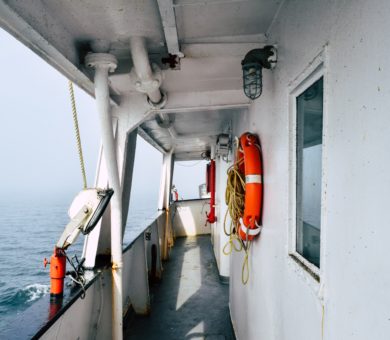Introduction
“We should do something.”
In the early days following a disaster, philanthropists naturally want to take action. With communities broken and people suffering, the call to give is compelling. If ever philanthropy should step up to help, many donors believe, it is in such times of dire and unexpected need.
However, donor urgency to act can lead to mistakes. In the confusion and uncertainty following a disaster, the haste to do “something” can end up creating more harm than good.
That’s why experienced donors often take pains to respond thoughtfully as well as quickly in crisis situations.
This short guide, part of our Philanthropy Roadmap series, has been created as a resource for emerging and established philanthropists – individuals and families who want to respond to a disaster and see their funds have the most impact.
Of course, a donor’s specific strategy will reflect the unique challenges presented by each crisis as well as her own expert and personal advice. Still, the best time to start thinking about giving in a crisis is before the crisis begins. To this end, we offer ten key thoughts to consider – a way for you to leverage the best practices developed by other philanthropists over the years.
Ten Ideas to Consider
Ten Ideas to Consider
1. Prepare
Emergencies don’t eliminate the need for planning and strategy, they heighten it. The trick is not to wait until the emergency is upon you. Some donors create their own crisis plan with specific roles for staff or consultants and specialized resources. In developing guidelines, consider:
Timing: Where in the recovery stage do you fit in?
Decision Making: Who in your family or staff is designated as the lead to manage an efficient response?
Focus: To what types of disaster will you respond? What target areas or populations will you support?
Partners: Is there a short list of donors you might collaborate with?
Process: Is there an established vehicle for giving? Are there streamlined grantmaking processes in place for each situation?
Update your disaster plans periodically to ensure they stay up-to-date with your philanthropic interest.
2. Be quick, but don’t hurry
Legendary UCLA basketball coach John Wooden used this phrase often to characterize an approach that combined readiness and responsiveness with good judgment. Solid research, cogent analysis and the ability to say no to a poorly thought-out proposal are all hallmarks of good crisis giving. It’s natural to feel an emotional pull to take action. But the impact of any action will be enhanced by taking time to learn the specifics of a disaster.
3. Waste Not
The stories of misdirected emergency aid are as common as they are painful. Because desperately needed medicine is labeled in a foreign language, it lies unused on the docks. Tons of donated food cannot be distributed because there is no security to ensure delivery. Truckloads of unneeded clothing arrive at the site of a flood due to early and erroneous media reports. Low priority aid can clog transport, storage and distribution and slow urgently needed supplies. Donors should keep in mind that cash grants are often much more useful than goods unless those goods come in response to a specific and credible request. And grants designated for general operating support can provide much needed flexibility and stability during times of crisis.
4. Reach out to communicate
Information is king during a disaster. But initial news reports can be misleading. Disasters can destroy communications infrastructure. National or international media reports about needs in affected areas can be untrustworthy and governments can skew the official story to serve political ends. Since needs often change dramatically from day to day, week to week, even established and authoritative sources may simply not know the real needs of the people and communities affected. Updates should come from trusted local sources and informants. This is where two-way communication is important. Donors need not wait passively for information to come to them. They can be active in seeking out local partners and NGOs already working in the disaster zone, not only to find out what is going on and what people need, but to ask if their ideas for philanthropic support might be useful. Donated services, such as those provided by teams of medical personnel, can help as long as they don’t duplicate resources already on the ground. And be patient— organizations may be responding to multiple inquiries from funders, as well as to the needs of the crisis, so response time might not be as timely as under normal circumstances.
5. Collaborate
This can be difficult and costly, but there are glaring penalties for lack of collaboration during crisis. Duplication, waste and poor prioritizing are among the pitfalls for funders who don’t work well with others. It’s worth remembering that philanthropy can play a unifying role in these situations, bringing together key actors across sectors. Philanthropists also can work with peers to pool funds and share information. A key strategy for funders is sharing information with other donors. In times of disaster, complex grantmaking processes and strict guidelines become less important than reaching out quickly to affected communities. Developing a streamlined application process and sharing with other partners can help resources reach communities more efficiently. After Hurricane Katrina struck in 2005, philanthropists joined to create a dynamic funder collaborative, the Gulf Coast Fund, which used a flexible approach to adapt its purpose and function to changing needs during the recovery process.
6. Consider the long term
Communities recover from disasters over many years and yet crisis philanthropy often focuses only on the short term. “More than one-third of private giving is typically done within the first four weeks of a rapid-onset disaster, and close to two-thirds within the first two months,” according to a 2011 report by the Conrad N. Hilton Foundation. “Within five or six months, almost all of this giving stops.” Yet, the best role for philanthropists may not be as first responders. Sending the vast majority of resources into the disaster area in the very early stages can have significant drawbacks. Often, an effective approach is to split funding – initially supporting the capacity of groups that are already mobilized and deferring part of a grant for weeks or months to see what important needs remain after the first wave of relief aid. Communities eventually need to plan and rebuild, and philanthropists with the patience to fund these longer term efforts can make a huge difference. One of the best ways to support long-term recovery of affected communities is by giving residents tools and opportunities to help themselves. Involving beneficiary populations in decisions on how philanthropic resources are used encourages community recovery. RPA’s own Fund for Gulf Communities (see story on page four) has been an influential model in the lasting benefits of this approach. When communities can come together and help their neighbors, that can prove more effective in generating resiliency than when people from outside the community come in to provide services and then leave. Funders can also play a role in supporting disaster preparedness and prevention.
7. Monitor results and turn your experience into usable information
Lessons from one crisis can inform the response to the next. Funders who record their strategy and their outcomes—their challenges as well as their successes—add to a knowledge bank for other organizations. When such stories are made accessible to other funders, NGOs and governmental agencies, the ability to respond to the next disaster is enhanced. However, seemingly similar crises can have vastly dissimilar repercussions. Hurricane Katrina, for example, blighted an entire region; the rebuilding process has allowed new models of housing, education, health care and employment readiness to be built to scale. Hurricane Sandy, by contrast, left devastating effects on certain neighborhoods, but one mile inland there were functioning emergency services, hospitals and schools. A donor who tries to replicate the response to Katrina in the aftermath of Sandy will quickly become frustrated with the lack of systemic change they are seeking. Donors should keep in mind that different disasters will require different responses and should manage their expectations accordingly.
8. Increase impact by being flexible
Consider doing things differently in light of a particular crisis. Is there a local nonprofit organization which has not received a large amount of philanthropic support in the past, but is doing a great job now? Can grantmaking processes be streamlined? Is there an area you don’t normally fund, but which you can see represents a pressing need? The ability to improvise can prove valuable as the disaster changes over time. One important element of donor flexibility is being willing to support local institutions that affected populations know and trust, which may not always be the kind of nonprofits that you are used to funding. Building on existing capacity in a community affected by a disaster is important to long-term recovery, preparedness and mental health/wellness needs. Networks that already exist among local churches or other religious institutions, for example, might be better positioned to reach communities in need than a large hospital network or government agency. One thing to watch out for: opportunistic organizations can spring up in times of crisis that may not be trustworthy or knowledgeable about how to help people in need.
9. Do your due diligence
Many philanthropists wonder if they should give money to a big organization like the Red Cross in response to a crisis or if they should try to keep within the framework they’ve built for funding smaller organizations. There is no simple answer. Support to major aid organizations is vital. At the same time, philanthropists should keep in mind that big international relief organizations sometimes receive more contributions for a specific disaster than they can spend. There may be organizations you already know working to help affected populations whose response efforts you could support. These trusted partners may also be a valuable source of useful information.
10. Keep your focus
Disaster-related grants can fit into a funder’s existing programmatic or geographic priorities. For example, a foundation with a program focused on youth can target its disaster response grants to help after-school programs expand to include displaced children.
Case Studies
-
Strengthening communities for the long-term on the Gulf Coast
A series of disasters (Hurricanes Katrina, Rita and Isaac and the explosion of the Deepwater Horizon rig) led to an outpouring of immediate support for affected communities along the Gulf Coast. But years later, although no longer in the news, communities that depend on Gulf marine life for their livelihoods are still struggling.
An anonymous donor with a desire to help those communities impacted by the BP oil spill approached RPA for advice, and contributed $20 million to create the Fund for Gulf Communities. The Fund is designed to help families and individuals who were affected by the spill to access the emergency assistance, mental health and wellness, financial literacy, and employment programs they need to attain self-sufficiency. The Fund also addresses youth wellness and resiliency.
RPA identified six partner organizations in four states (Louisiana, Mississippi, Alabama and the Florida Panhandle) through which the Fund can support key services and programs in their coastal communities. By working with these partners, the Fund is strengthening local philanthropy by helping the partner organizations become more knowledgeable about their local nonprofit sector, better able to support key service organizations, and positioned to use this experience to attract new funders and expand their grantmaking. By contributing to more resilient communities, the Fund for Gulf Communities hopes to build a stronger Gulf region that is better equipped to recover from future disasters and emergencies.
-
Funding before disaster strikes
Community foundations often bear heavy responsibilities in times of crisis. After 9/11, the San Diego Foundation, no stranger to coping with crisis, started a special fund to prepare for community-wide disasters. In October 2007, wildfires created one of the largest natural disasters in California history. More than 500 square miles burned in San Diego County—destroying over 1,600 homes and impacting thousands of residents.
The foundation’s disaster fund commissioned an assessment of community needs. The results informed the foundation’s strategy for recovery:
- Creating special teams to help support recovery projects.
- Helping families and individuals to bounce back
- Rebuilding homes
- Restoring the environment
- Preparing for future wildfire disasters.
The fund granted more than $10 million to support those five goals.
-
Funding relief and recovery in Japan
I n response to the 2011 Fukushima disaster, more than 3,000 donors pooled their donations ($5.6 million) to address Japan’s nuclear crisis through local organizations. Give 2 Asia, a charitable organization based in San Francisco, acted as intermediary, identifying projects that “empower and enable survivors” and establishing relationships with Japanese nonprofits, professional associations and social enterprises. The financial support was split between immediate and longer-term projects. Immediate relief included support for managing the thousands of short-term volunteers who helped with cleanup and emergency services. Longer term support includes medical care, mental health counseling, legal aid to victims and funding to restart small businesses.
-
Lessons learned (and shared)
From 1989 to 2011, the Conrad N. Hilton Foundation gave grants worth $21.6 million for relief and recovery following disasters. In 2011, it published a report about its experiences, suggesting that foundations:
Fund longer-term recovery projects consistently after offering initial relief aid
Make relief grants within a week or two and then patiently research the funding of a second round of giving for recovery
Consider small investments in program development and collaboration with other funders as well as hiring local consultants (lessons from Hurricane Katrina)
Fund disaster risk reduction
Expand staff so there is time and expertise to intensely focus on disasters quickly after they happen
Increase speed of response and flexibility by delegating the authority from the board to the chairman and president of the foundation to co-authorize grants totalling up to $500,000 per disaster.
The report also included a suggestion for future consideration by the foundation—“to introduce an annual ‘forgotten emergency’ grant or grants and then hold a press conference to try and help the emergency be less forgotten.”
-
Laurie M. Tisch Illumination Fund
Disaster response grantmaking can be most meaningful when it fits into a donor’s existing priorities. The Illumination Fund supports access to healthy food for all New Yorkers. Its food initiatives support novel strategies to increase access to healthy foods and promote healthy choices through systemic changes and partnerships with community-based institutions. After Hurricane Sandy, many of the city’s key food nonprofits incurred unplanned expenditures as they responded to the disaster, aided affected communities and replaced damaged or lost equipment and resources. In order to maintain their regular operations during this challenging period or to meet increased demand, some organizations had to reallocate unrestricted funds that were planned for other core programs. The Illumination Fund has created a grant program to help these critical food organizations become financially whole – replace damaged equipment, restock their warehouses and recover from the losses they suffered in the days after the storm. (See profile of Laurie Tisch in RPA’s Great Givers series.)
-
Hands-on philanthropy in Haiti
Retired Boston contractor Jim Ansara and his family had already donated $18 million to organizations seeking solutions to poverty when the Haiti earthquake struck in 2010. Mr. Ansara began visiting the Caribbean country weekly to help with the recovery and became, as a volunteer, the director of construction for the Mirebalais National Teaching Hospital. A project of Dr. Paul Farmer’s organization, Partners in Health, the hospital is Haiti’s largest post-earthquake building project. The recently completed Mirebalais Hospital is a bright spot in a less-than-inspiring recovery for Haiti. In spite of a huge influx of aid after the earthquake, and the estimated creation of 5,000 new NGOs to serve the Haitian people, there is still much to do. Oxfam International reported more than half a million people were still living under tents or tarpaulins in January, 2012. That’s part of what motivated Mr. Ansara. “I wanted to do more than just serve on boards,” he told The Christian Science Monitor in 2011. “[Mirebalais] has given me a much bigger purpose. If we can really pull this off, it will have a tremendous impact on health care in Haiti…. This will attract people from all over Haiti because it’s free care.”
Moving Forward
Moving Forward
Disaster strikes. Your heart goes out to the people suffering. Cities have been destroyed or flooded, families have been displaced. Disease is spreading. You have money and you want to help. But you don’t want to rush in and squander resources. How can you respond with appropriate speed and still give in the thoughtful, effective way you do normally?
The key to crisis giving is process not panic. For donors, that means going back to fundamentals—and that means, asking questions.
Here, the five questions of the Philanthropy Roadmap are pertinent:
Why are you giving?
What do you want to achieve?
How do you think change will happen?
How will you assess progress?
Who will join you?
Crisis philanthropy is no different than any other kind of giving when it comes to these core issues. What can be different, however, is the sense of urgency to address these questions. Donors benefit by gaining clarity about their values and motivations, their goals, their strategy, their ability to define and measure success and by thinking proactively about where they can find allies and partners.
It’s impossible to predict exactly how a region will bounce back from adversity or what aid will be most effective, but one thing is certain: philanthropy has a role to play in recovering from every disaster. And donors who balance courage with prudence will always contribute to those efforts.



